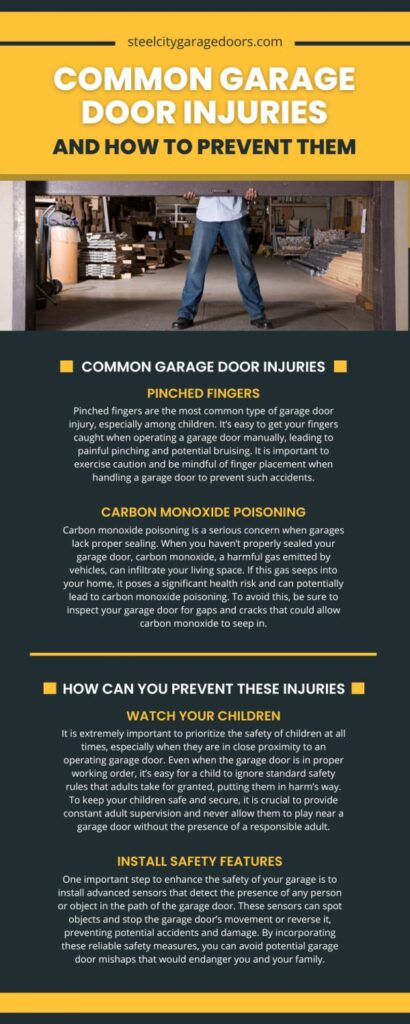
Garage doors are an essential part of many homes, providing convenience and security. However, these heavy and powerful mechanisms can pose a serious safety risk if not handled properly. A malfunctioning garage door can cause severe injuries or even death due to crushing forces. Understanding the potential dangers and taking proactive steps to ensure your garage door is safe is crucial for protecting yourself and your loved ones.
This article will delve into the various aspects of garage door safety, outlining the risks involved, providing guidance on inspecting and maintaining your garage door, and offering practical tips to prevent accidents and injuries. By following these recommendations, you can significantly reduce the chances of a garage door-related incident occurring in your home.
Garage Door Safety Risks
Can a garage door kill you? The answer is yes, unfortunately. Due to their weight and force, malfunctioning garage doors can cause fatal injuries. A falling garage door can crush individuals caught underneath, leading to severe trauma or death.
Beyond crushing injuries, other dangers associated with garage doors include:
- Entrapment: Children and pets are particularly vulnerable to becoming trapped between the moving parts of a garage door and the floor or walls.
- Pinch Points: The springs, cables, and rollers of a garage door can pinch fingers or limbs if not properly guarded.
- Electrical Hazards: Garage doors often involve electrical components that can pose a risk of electrocution if damaged or improperly handled.
Inspecting Your Garage Door
Regularly inspecting your garage door is essential for identifying potential problems before they escalate into dangerous situations. Here’s what to look for:
- Inspect the Springs: Garage door springs are under immense tension and should be checked for any signs of rust, wear, or damage. If you notice any issues, contact a qualified technician immediately.
- Examine the Cables: The cables that connect the springs to the door should be securely attached and free from fraying or breakage.
- Check the Rollers: Garage door rollers should move smoothly along the tracks. Look for signs of wear, damage, or misalignment.
Additional Inspection Points:
- Weather Stripping: Ensure the weather stripping around the garage door is intact to prevent drafts and moisture intrusion.
- Remote Control: Test your remote control frequently to ensure it operates the garage door reliably. Replace batteries as needed.
- Safety Sensors: Garage doors are equipped with safety sensors that prevent the door from closing on obstructions. Test these sensors regularly by placing an object in the path of the closing door.
Maintaining Your Garage Door
Proper maintenance can significantly extend the lifespan of your garage door and reduce the risk of accidents. Here are some essential maintenance tasks:
- Lubricate Moving Parts: Regularly lubricate the hinges, rollers, and tracks with a silicone-based lubricant to ensure smooth operation.
- Tighten Loose Bolts: Check all bolts and screws on the garage door frame and components periodically and tighten any that are loose.
- Clean the Door: Keep your garage door clean by removing dirt, debris, and leaves regularly. This will prevent corrosion and improve its appearance.
Professional Maintenance:
Consider scheduling professional maintenance for your garage door at least once a year. A qualified technician can perform a thorough inspection, identify potential problems, and make necessary repairs to ensure optimal safety and performance.
Garage Door Safety Guidelines
Following these guidelines can help minimize the risk of accidents and injuries associated with your garage door:
- Never Stand Under a Closing Garage Door: Always keep clear of the garage door when it is in operation.
- Teach Children About Garage Door Safety: Explain the dangers of playing near or around the garage door to children and supervise them closely.
- Keep Pets Away from the Garage Door: Train your pets to stay away from the garage door area and never leave them unattended near the door.
Additional Safety Measures:
- Install a Wall Switch: Consider installing a wall switch in addition to the remote control for added safety and convenience.
- Use a Backup Battery System: In case of power outages, a backup battery system can ensure your garage door opener continues to function.
Preventing Accidents and Injuries
By implementing these preventative measures, you can significantly reduce the risk of accidents and injuries associated with your garage door:
- Regular Inspections: Conduct frequent inspections of your garage door and its components to identify potential problems early on.
- Prompt Repairs: Address any issues or damage to your garage door immediately to prevent further deterioration and potential hazards.
- Safety Education: Educate yourself and your family about garage door safety guidelines and best practices.
Conclusion
Garage doors, while convenient and essential, can pose a serious safety risk if not handled properly. Understanding the potential dangers, inspecting and maintaining your garage door regularly, and following safety guidelines are crucial steps in preventing accidents and injuries. By taking these precautions, you can ensure that your garage door remains a safe and reliable part of your home for years to come.
